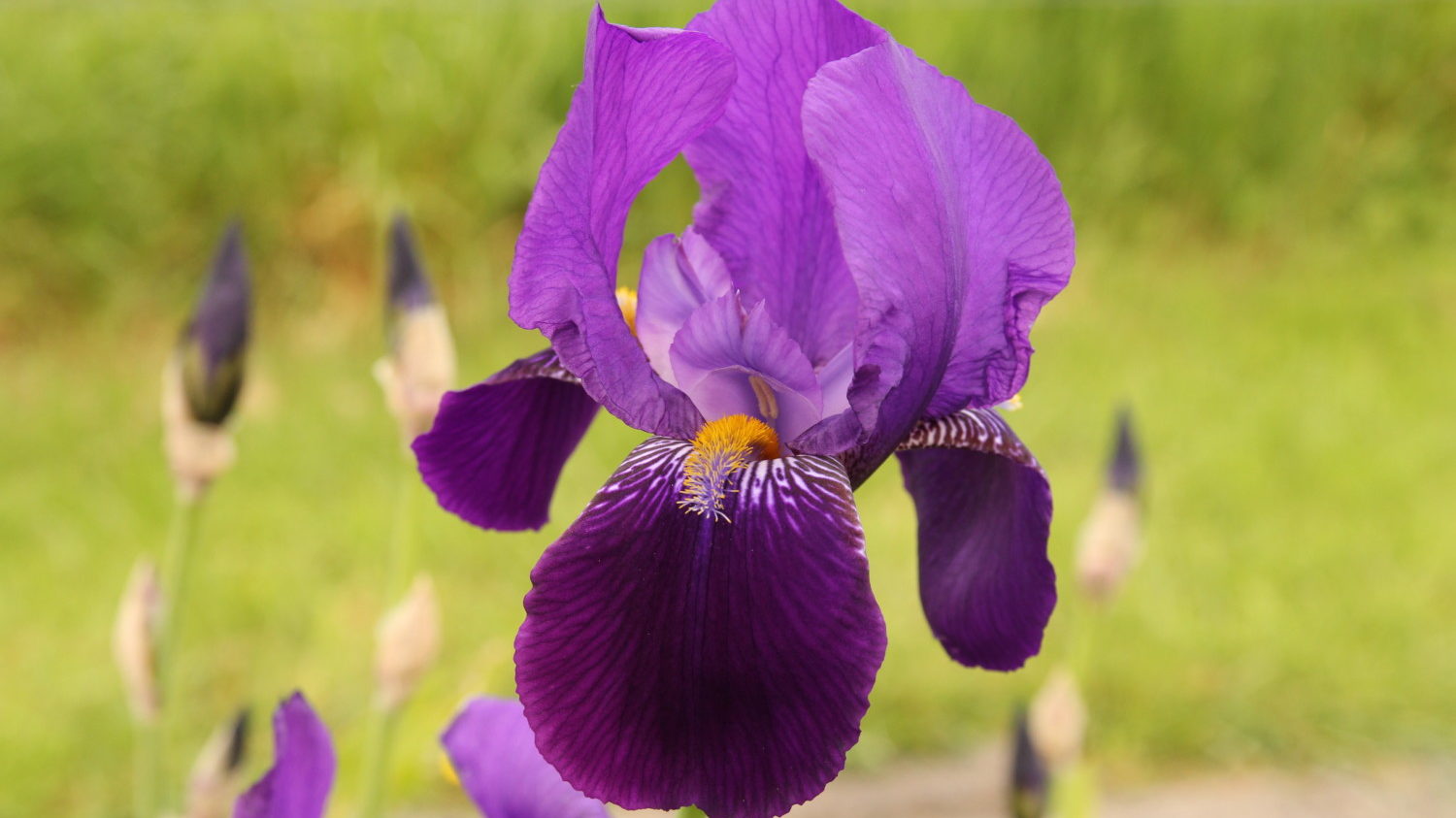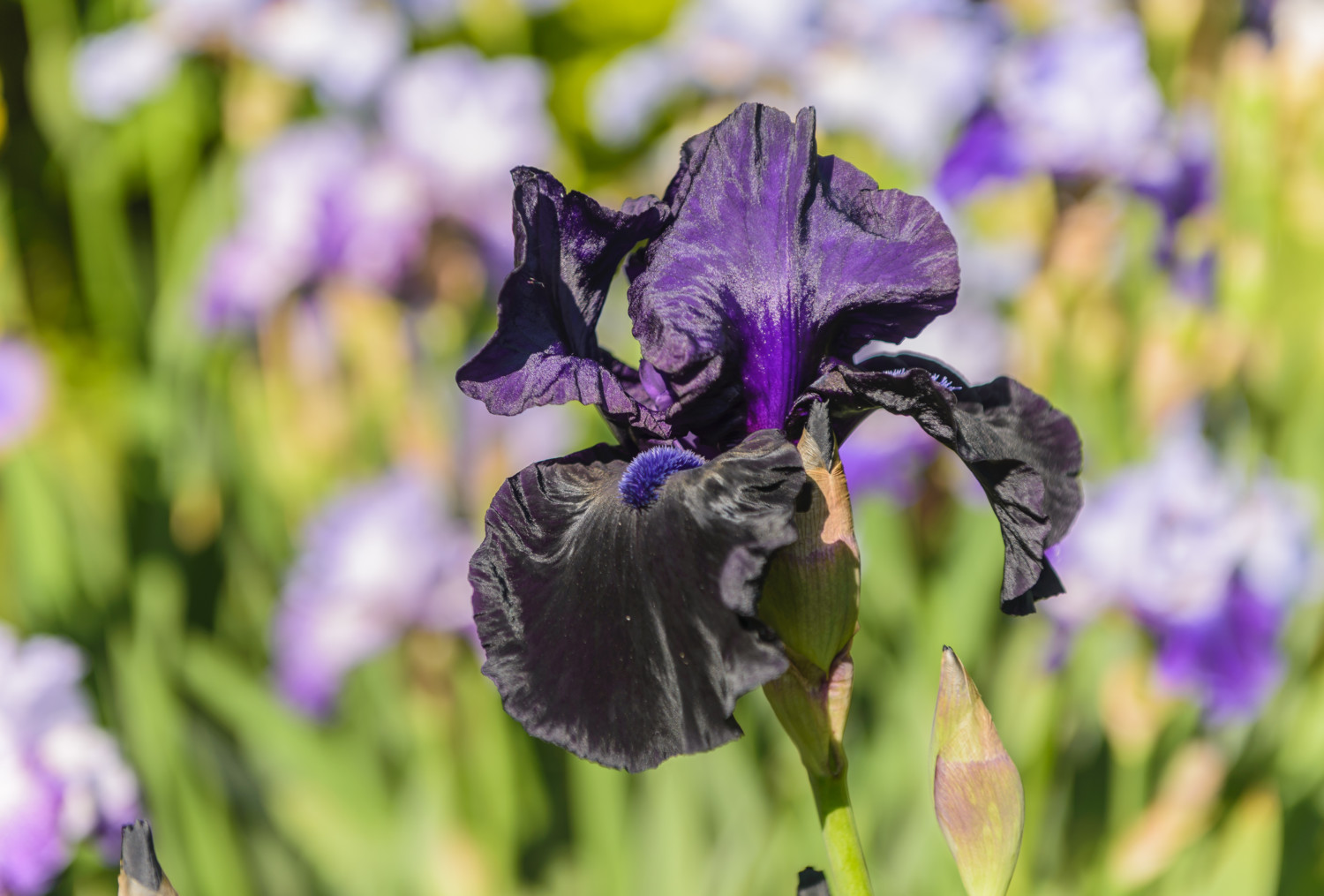How to grow bearded iris
Although their Latin name is Iris germanica, the English name of these stunning perennials is bearded iris because of the bristly hairs (that look rather like a fuzzy caterpillar) emerging from flowers’ “throats.” French monarchy chose the stately beauties as the basis for the fleur-de-lis emblems on its coat of arms, but bearded irises are not limited to royalty. With the right timing, preparation and care, anyone can grow them.
All About The Bearded Iris
It is easier to name the colors of bearded iris that don’t exist than to list every variety available. In fact, experts state that you can find them in every shade but one: fire engine red. So along with the pinks, blues and purples, you can grow orange, brown, multi-colored and even black bearded irises. The brightly-colored blossoms are delightfully fragrant, as well.
Bearded iris is typically hardy in Zones 3 to 9. The plant includes dwarf varieties (which only grow a few inches tall), knee-high and full-size varieties that can reach an impressive 40 inches tall. They bloom in warmer regions as early as March and can show their stunning faces as late as June, with certain varieties able to re-bloom in late summer or fall. When the temperatures drop below freezing, the plants go dormant, waiting to return the following spring.
Bearded irises are exceptionally robust, require modest maintenance, tolerate drought well, are resistant to deer and rodents and make a beautiful addition to any cutting garden.
Preparation And Planting
Bearded irises are a reward for patient gardeners, as you must plant them in late summer (mid-July through August) to enjoy them come springtime. And although they are hardy plants, bearded irises do have certain requirements to grow healthy and strong. They need to be planted in rich, well-drained soil in a place that receives at least six to eight hours of sun every day (in Hardiness Zones 8 to 11, they can tolerate four to six hours of sunlight and appreciate some shade during the day). You can plant them in a raised bed or slope if you need to improve drainage.
The flowers grow from rhizomes: thick, rootlike structures that grow sideways rather than up, running just below the soil’s surface. To plant them, build a small mound of soil and bury a rhizome’s roots downward in the center of the mound, leaving about one-quarter exposed at the top. Plant individual rhizomes one to two feet apart to allow good air circulation and sun exposure. Pat the soil firmly around the roots and water thoroughly.

Caring For Bearded Irises
Water the new plants every second day for the first 10 days. After that, once a week should be sufficient. Water deeply during summer droughts, taking care not to overwater as this can cause the rhizomes to rot. Do not mulch.
After the flowers fade, deadhead them and remove the seedpods to prevent seedlings from sprouting and choking the soil. Prune the foliage in the fall to help prevent damage from pests and diseases.
Rhizomes multiply as plants mature, which means an abundance of flowers and leaves over time. However, it is important to divide the plant every three to four years to provide more space so the clump doesn’t become too crowded and diminish bloom. After carefully digging up a clump, separate smaller rhizomes from the primary one by gently pulling them apart or cutting them with a small, sharp knife.
Keep divisions with healthy fans of leaves, usually from the exterior parts of the plant, and toss the crowded interior pieces. If any chunks show signs of rot, make sure not to put them in the compost. Replant them the same way you planted the original rhizome or share them with friends for their own gardens.

Will you plant some of these beautiful flowers in your garden?



